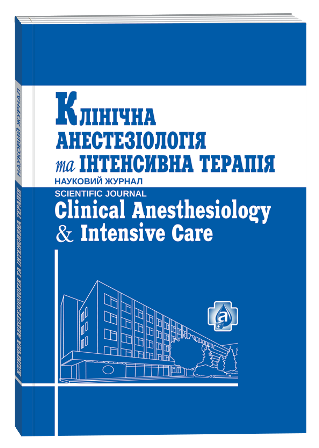ПРОБЛЕМА АНТИБИОТИКОТЕРАПИИ ПРИ НОЗОКОМИАЛЬНЫХ ИНФЕКЦИЯХ
Ключові слова:
антибиотикотерапия, нозокомиальные инфекции, отделение интенсивной терапииАнотація
Внутрибольничные инфекции относятся к основным причинам уменьшения эффективности лечения многих заболеваний во всем мире. Они являются причиной огромных расходов на систему здравоохранения и обнаруживаются во всех больницах, чем лучше больница, тем серьезнее и многочисленнее инфекции. Синтез новых антибиотиков является недостаточным для решения проблемы фармакорезистентности бактерий. Инвазивность в отделении интенсивной терапии связывают с частым применением таких методов, как искусственная вентиляция легких, катетеризация мочевого пузыря, использование центральных венозных катетеров. Эти процедуры, вместе со снижением способности иммунной системы, диабетом и ожирением у многих пациентов, способствуют развитию инфекции. Таким образом, проблема нозокомиальных инфекций является одной из самых актуальных проблем в современной медицине.
Посилання
Bad bugs, no drugs: no ESKAPE! An update from the Infectious Diseases Society of America / H. W. Boucher, G. H. Talbot, J. S. Bradley [et al.] // Clin Infect. Dis. – 2009. – N 48. – P. 1–12.
Burden of antimicrobial resistance in European hospitals: excess mortality and length of hospital stay associated with bloodstream infections due to Escherichia coli resistant to thirdgeneration cephalosporins / M. E. de Kraker, M. Wolkewitz, P. G. Davey [et al.] // J. Antimicrob. Chemother. – 2011. – N 66. – P. 398–407.
Clinical impact of antimicrobial resistance in European hospitals: excess mortality and length of hospital stay related to methicillin-resistant Staphylococcus aureus bloodstream infections / M. E. de Kraker, M. Wolkewitz, P. G. Davey, H. Grundmann // Antimicrob. Agents Chemother. – 2011. – N 55. – P. 1598–1605.
Emergence of high levels of extended-spectrum-beta-lactamase-producing gram-negative bacilli in the Asia-Pacific region: data from the Study for Monitoring Antimicrobial Resistance Trends (SMART) program, 2007 / S. P. Hawser, S. K. Bouchillon, D. J. Hoban [et al.] // Antimicrob. Agents Chemother. – 2009. – N 53. – P. 3280–3284.
Infections with extended-spectrum beta-lactamase-producing enterobacteriaceae: changing epidemiology and drug treatment choices / J. D. Pitout // Drugs. – 2010. – N 70. – P. 313–333.
International study of the prevalence and outcomes of infection in intensive care units / J. L. Vincent, J. Rello, J. Marshall [et al.] // JAMA. – 2009. – N 302. – P. 2323–2329.
Brusselaers N. The rising problem of antimicrobial resistance in the intensive care unit / N. Brusselaers, D. Vogelaers, S. Blot // Annals of Intensive Care. – 2011. – N 1. – P. 47.
Surveillance, control and management of infection in intensive care units in Southern Europe, Turkey and Iran — A prospective multicenter point prevalence study / H. Erdem, A. Inan, S. Altindis [et al.] // J. Infect. – 2014. – N 68 (2). – P. 131–140.







